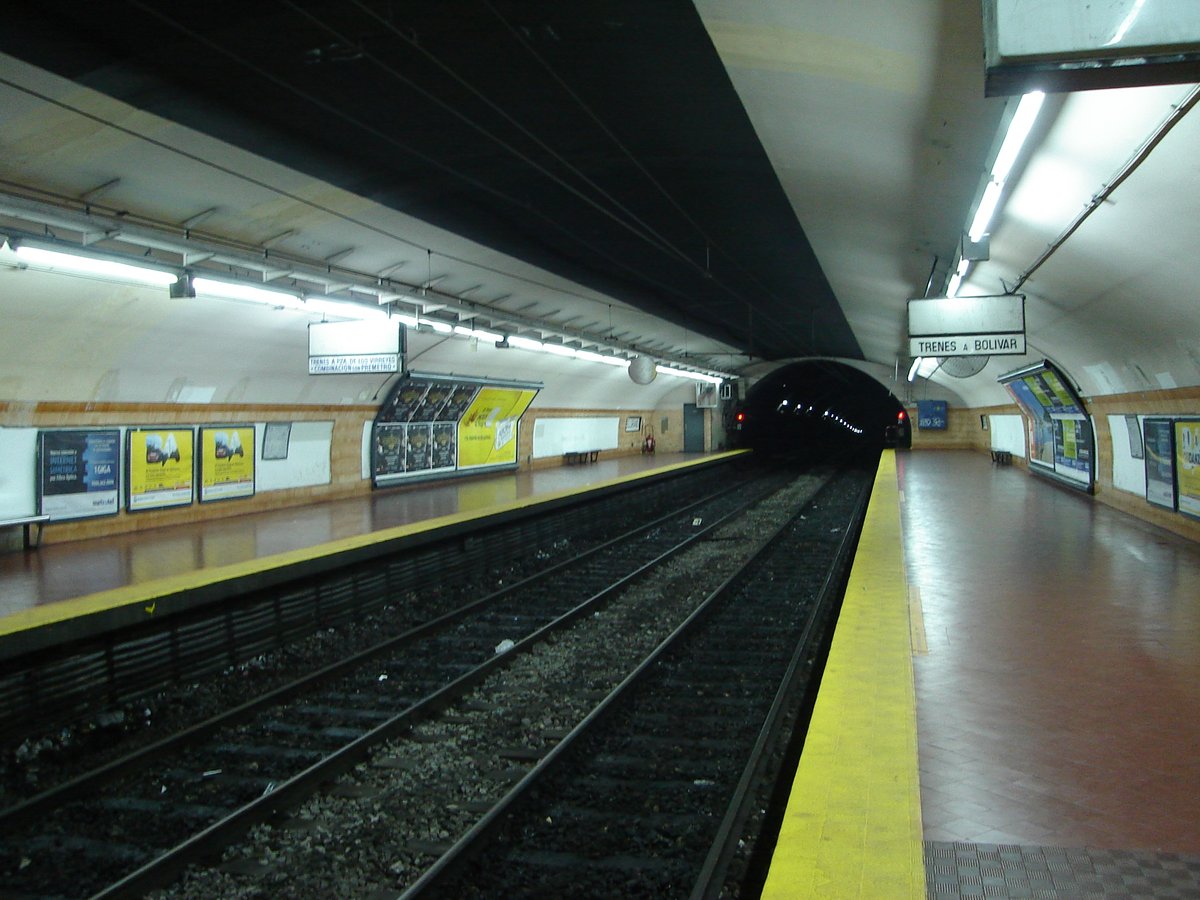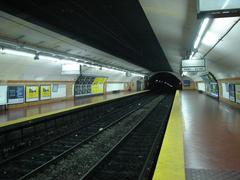
Belgrano Buenos Aires: Visiting Hours, Tickets, and Historical Sites Guide
Date: 15/06/2025
Introduction to Belgrano’s Historical and Cultural Significance
Belgrano, a distinguished neighborhood in Buenos Aires, Argentina, artfully fuses its rich historical past with a vibrant contemporary lifestyle. Established in 1855 and named after Manuel Belgrano, the revered creator of the Argentine flag, the neighborhood once served as a rural retreat for the city’s elite and even briefly held the status of national government seat in 1880 (LandingPadBA; NickiPostsTravelStuff). Today, Belgrano’s streets reveal a range of architectural treasures, from neoclassical mansions and Art Deco gems to elegant, tree-lined avenues, especially notable in the Belgrano R sub-barrio (Turismo Buenos Aires).
The neighborhood’s dynamic cultural fabric is woven through its lush parks—such as Barrancas de Belgrano designed by Carlos Thays—its bustling Barrio Chino (Chinatown), and its iconic landmarks, including the Monument of General Manuel Belgrano, Iglesia Inmaculada Concepción (“La Redonda”), and museums like the Museo de Arte Español Enrique Larreta and Museo Histórico Sarmiento (Buenos Aires City Parks; Larreta Museum).
Belgrano’s excellent connectivity via subway Line D, Mitre train stations, and numerous bus routes along Avenida Cabildo further enhances its appeal as a destination that is both accessible and safe, with a family-friendly atmosphere and an array of cultural offerings (NickiPostsTravelStuff; Wikipedia).
This guide provides comprehensive information on Belgrano’s visiting hours, ticketing, transportation, and essential tips, enabling visitors to enjoy the full spectrum of the neighborhood’s historical and cultural riches (Vamos Spanish; Airbnb Experiences).
Table of Contents
- Introduction
- Origins and Historical Development
- Urbanization and Architectural Heritage
- Cultural and Social Life
- Monuments, Landmarks, Visiting Hours & Tickets
- Modern Role and Main Attractions
- Neighborhood Structure and Transportation
- Must-See Attractions: Hours & Tickets
- Accessibility and Guided Tours
- Visitor Tips
- Barrancas de Belgrano: Visitor Guide
- FAQ
- Conclusion and Call to Action
Origins and Historical Development of Belgrano
Founded in 1855 and named after the national hero Manuel Belgrano, this area began as a rural town serving as a haven for Buenos Aires’ upper class (LandingPadBA). Its historic significance peaked in 1880 when it briefly became the seat of the national government, leaving behind mansions and government buildings that remain part of its unique architectural landscape (NickiPostsTravelStuff).
Urbanization and Architectural Heritage
Belgrano’s urban landscape is a testament to its diverse history, featuring everything from 19th-century townhouses to contemporary high-rises. The Belgrano R sub-barrio is particularly renowned for its cobblestone streets and stately residences, showcasing influences from European immigrants, notably Italians and Spaniards, in architectural styles such as neoclassical, Art Deco, and colonial revival (Turismo Buenos Aires).
Cultural and Social Life
Today, Belgrano stands as a lively cultural hub, with museums, galleries, and cultural centers that host a steady stream of art and social events. Barrio Chino—Belgrano’s Chinatown—adds a multicultural dimension, presenting authentic Asian markets and eateries alongside traditional Argentine cafés (NickiPostsTravelStuff).
Monuments, Landmarks, Visiting Hours & Tickets
Monument of General Manuel Belgrano
A central symbol of Argentine history, this monument is accessible 24/7 and free to visit (GPSmyCity).
Iglesia Inmaculada Concepción (“La Redonda”)
This unique circular church, completed in the late 19th century, is open Monday to Saturday from 9 AM–6 PM and Sunday from 9 AM–1 PM. Entry is free; donations are welcome. Guided tours can be arranged by appointment (Iglesia La Redonda Official).
Plaza Belgrano and Historic Plazas
Open public spaces ideal for relaxation, photography, and community events. Open year-round, free of charge.
Museums
- Museo de Arte Español Enrique Larreta: Tuesday–Sunday, 12 PM–7 PM. Admission ARS 150; discounts for students/seniors (Museo Larreta).
- Museo Histórico Sarmiento: Tuesday–Sunday, 11 AM–6 PM. Free entry (Museo Histórico Sarmiento).
Guided Tours & Special Events
Local operators offer historical, gastronomic, and cultural tours (USD 15–30). Annual events include the Chinatown Festival and Night of the Museums.
Modern Role and Main Attractions
Avenida Cabildo is a lively commercial artery, bustling with shops, cafés, and entertainment. Belgrano is celebrated for its safety, greenery, and family-oriented environment (NickiPostsTravelStuff).
River Plate Stadium (Estadio Monumental)
This iconic stadium hosts football matches and concerts. Museum and tour hours: 10 AM–5 PM (check for event-specific changes). Tickets: Approx. ARS 800 (Wikipedia).
Neighborhood Structure and Transportation
Subdivisions
- Central Belgrano: Centered on Avenida Cabildo, featuring dense commerce and excellent public transport (Wikipedia).
- Belgrano R: Quiet, residential, known for stately mansions.
- Belgrano C (Barrio Chino): Home to Chinatown and Asian-Argentine culture.
- Lower Belgrano (Bajo Belgrano): Near the river, with parks and a relaxed ambiance.
Connectivity
- Subte Line D: Main metro artery.
- Mitre Train: Stations at Belgrano C and R.
- Bus Lines: Many routes, especially along Avenida Cabildo.
- Major Avenues: Libertador, Luis María Campos, Figueroa Alcorta, and others.
Must-See Attractions: Visiting Hours & Tickets
- Barrancas de Belgrano: Park open 6 AM–10 PM, free entry (Buenos Aires City Parks).
- Plaza Belgrano: Open 24 hours, free.
- Iglesia Inmaculada Concepción: See above for hours.
- Museo de Arte Español Enrique Larreta: See above for hours and tickets.
- Museo Histórico Sarmiento: See above for hours and tickets.
- Barrio Chino: Shops generally open 10 AM–8 PM.
- Avenida Cabildo: Best visited weekends 10 AM–8 PM.
Accessibility and Guided Tours
Most areas and attractions are accessible, with some older streets presenting cobblestones. Wheelchair access is available in most museums; always check ahead if you have special needs. Guided walking and cycling tours are widely available (Airbnb Experiences).
Visitor Tips
- Getting Around: Subte Line D, Mitre train, and buses are convenient.
- Best Times: Spring (October–November) and autumn (March–April).
- Safety: Generally safe; use common sense in crowded or late-night situations.
- Dining: Explore parrillas, Asian restaurants, and local bakeries. Try helado (Argentine gelato).
- Shopping: Avenida Cabildo for mainstream shopping; Chinatown for unique imports.
- Cultural Experiences: Attend festivals, artisan fairs, and open-air concerts.
- Language: Spanish is primary; English is commonly spoken in tourist zones.
- Currency: Argentine peso (ARS); credit cards widely accepted.
Barrancas de Belgrano: History, Culture, and Visitor Information
Overview
Barrancas de Belgrano, designed by landscape architect Carlos Thays, is a historic park set on natural cliffs (“barrancas”) with panoramic city views. It features mature trees, walking paths, sculptures, and serves as a venue for tango performances and community events.
- Hours: 6 AM–10 PM
- Entry: Free
- Tours: Available weekends/public holidays through the city tourism office
- Transport: Subte Line D (Juramento/Congreso de Tucumán), buses, Mitre train (Belgrano C), taxis, and EcoBici bike stations
- Accessibility: Ramps and paved paths, though some slopes; check station accessibility in advance
Nearby Highlights
- Plaza Manuel Belgrano: For relaxation and local life.
- Chinatown: Vibrant food and shopping district.
- Museo Histórico Sarmiento: Argentine history museum.
Safety
Belgrano is among the safest areas in Buenos Aires. Still, keep watch for pickpockets in busy zones, use licensed taxis or ride-share apps at night, and keep valuables secure.
Everyday Life and Local Culture
Belgrano maintains a unique blend of old and new: cobblestone avenues, stately homes in Belgrano R, and the youthful energy from nearby universities (Vamos Spanish; Wander Argentina). Social life centers on plazas and parks, with mate, open-air workouts, and artisan fairs as regular sights (Buenos Aires Free Walks). The area is also home to football clubs, tango events, and vibrant music scenes (Airbnb Experiences).
Dining
Belgrano’s culinary landscape is diverse:
- Traditional Parrillas: Classic steakhouses serving Argentine beef (Vamos Spanish).
- Chinatown: Authentic Asian cuisine and markets (Buenos Aires Free Walks).
- International Options: Italian trattorias, Spanish tapas bars, Middle Eastern eateries, and contemporary fusion restaurants (World of Mouth).
- Notable Spots: Coronado (Montañeses 2599), Trattoria Olivetti, and various neighborhood cafés (Time Out Buenos Aires).
Shopping and Markets
Avenida Cabildo and Chinatown are key shopping areas, while Plaza Manuel Belgrano hosts weekend artisan fairs (Vamos Spanish). Specialty food markets and Asian supermarkets are popular among food lovers.
Frequently Asked Questions (FAQ)
Q: Are most attractions free?
A: Parks and plazas are free; museums may charge a small fee or offer free days.
Q: How do I reach Belgrano?
A: Subte Line D, Mitre train, and multiple bus lines provide easy access.
Q: Is Belgrano family-friendly?
A: Yes, with parks, cultural centers, and family events.
Q: What’s the best time to visit?
A: Spring and autumn for pleasant weather and events.
Q: Are tours available?
A: Yes, for history, food, and architecture via local operators or online platforms.
Conclusion and Call to Action
Belgrano stands out as a must-visit Buenos Aires neighborhood—rich in history, culture, gastronomy, and green spaces. Whether you’re exploring historical mansions, savoring world-class cuisine, or strolling through bustling markets, Belgrano offers experiences for every traveler.
Plan your visit by checking opening hours and booking tours in advance. For additional travel tips and real-time updates, download the Audiala app and follow us on social media. Begin your Belgrano journey today!
Visuals and Media Suggestions
- Images: Monument of General Manuel Belgrano, Iglesia Inmaculada Concepción, Barrio Chino archway, Avenida Cabildo, River Plate Stadium.
- Suggested alt tags: “Belgrano Buenos Aires visiting hours monument,” “Belgrano tickets Iglesia Inmaculada Concepción,” “Buenos Aires historical sites Belgrano.”
- Interactive map with museums, parks, and dining hotspots.






























































































































































